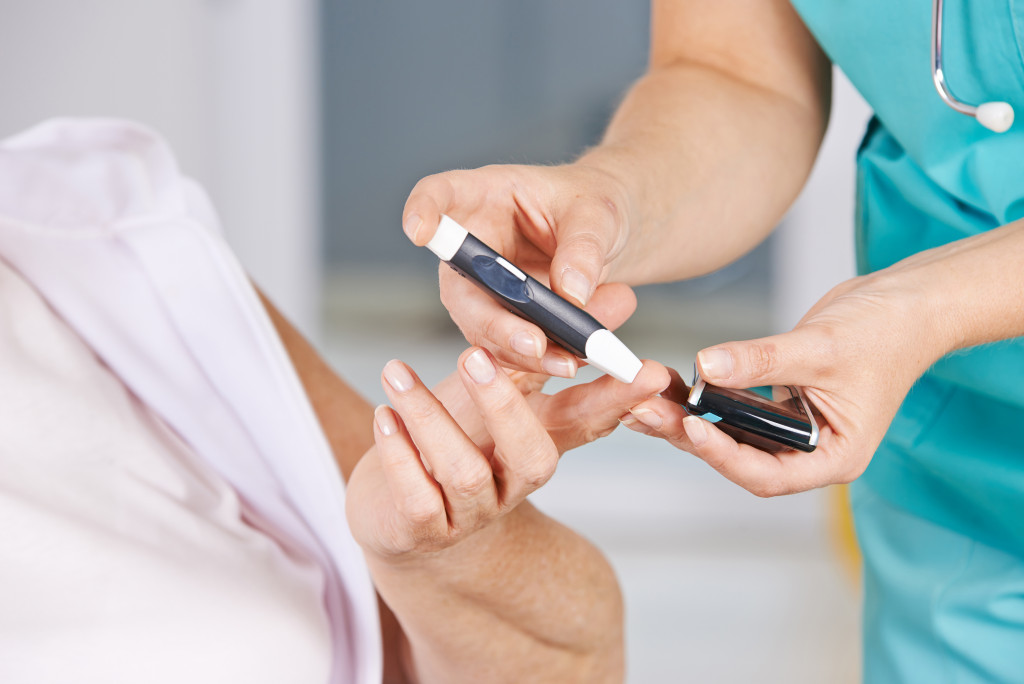Diabetes is a medical condition that happens when your body fails to metabolize insulin properly. In addition, it also develops when your body stops producing a sufficient amount of insulin to process the sugar in your bloodstream. Both of these manifestations of the disease result in health complications. If neglected, diabetes can lead to cardiovascular issues or even kidney failure. Your eye health will also suffer, and you’ll need to undergo eye procedures, such as keratoconus cross-linking surgery, to prevent permanent loss of sight.
It’s important for those diagnosed with diabetes to commit to a lifestyle change. This involves shifting to a healthier diet, fitness regimen, and stress reduction, among others. If you have yet to get an official diagnosis, do not wait for your bloodstream’s sugar levels to reach a point where a diabetes diagnosis is in order. Know the risk factors of the disease. Determine your level of susceptibility.
Weight
People with BMI beyond what’s considered healthy are at a greater risk of contracting diabetes. For adults, the ideal BMI is between 18.5 and 24.9. If your BMI is 30 or higher, you must be extra wary. Obesity and diabetes go hand in hand.
Waistline
Visceral fat is the accumulated fat in the abdominal area. It is both a sign and a trigger of insulin resistance. It’s in your best interest to keep your waistline below 40 inches if you’re a man. For women, the ideal waistline is below 35 inches. Anything beyond those measurements increases your likelihood of contracting diabetes.
Age
The older you get, the more susceptible you are to diabetes. Normally, the disease’s onset begins at 45. Diabetes diagnosis is most common to people between the ages 45 and 64. Ideally, before you turn 45, you should already be committed to a healthy lifestyle. However, it’s not too late to give yourself a lifestyle revamp.
Race
People from certain ethnic and racial backgrounds are more prone to contracting diabetes. Those at risk include Asians, Pacific Islanders, Hispanics, African Americans, and Native Americans. If you belong to any of these racial demographics, it’s best to be careful with your eating habits.
Family history
Results from studies that seek to link diabetes with genetics are not conclusive. However, medical professionals have always warned people with a family history of diabetes to be wary of the disease. If you have parents or siblings living with diabetes, consider yourself more likely to contract the disease. Get tested regularly to ensure that your sugar levels don’t reach the critical threshold that equates to prediabetes.
Sedentary lifestyle
Do not let your muscles atrophy. Muscles absorb excess sugar in your bloodstream. The more muscles you have, the less likely your bloodstream will be blocked with unused glucose. Plus, a sedentary lifestyle compromises your cardiovascular health. That’s another culprit for the onset of diabetes.
Pregnancy
Pregnant women are at a higher risk of contracting diabetes. This is called gestational diabetes. It happens because of the chemical changes that happen in the body during pregnancy. If you gave birth to a baby weighing more than nine pounds, you’re more prone to gestational diabetes. That can lead to type 2 diabetes if you do not commit to a healthy lifestyle post-delivery.
Depression
People living with depression are also at risk of contracting diabetes. That’s because depression triggers unhealthy eating habits. For example, you might start overeating, which will result in weight gain. That’s where your sugar levels will start acting up.
Dark spots
If you notice darkening in specific parts of your body, get tested for diabetes. Be most mindful of dark spots on the neck, armpits, and ankles. These physical manifestations might signal changes in your body’s insulin resistance.
Glucose tolerance
One of the surefire ways to know whether you’re at risk of diabetes is to have your blood sugar level tested. If it’s less than 140 mg/dL, you’re safe. You have impaired glucose tolerance (prediabetes) if your sugar level is between 140 and 199 mg/dL.
Type 2 diabetes is a preventable disease. If any of the risk factors included in this list applies to you, you must be extra cautious. It’s best to lead a healthy lifestyle if you want to spare yourself from this disease. Limit your consumption of bad carbohydrates and sugar. Quit being sedentary and start being active. Sleep right and say goodbye to stress. Lastly, consult with your physician and know your bloodstream sugar levels.
Remember that diabetes is a debilitating condition. It will be detrimental to your quality of life. Plus, the treatment can be quite expensive. Those should be enough to convince you to do everything in your power to fight the onset of the disease.

